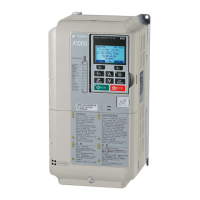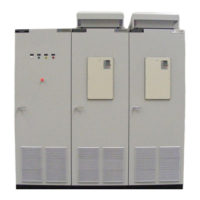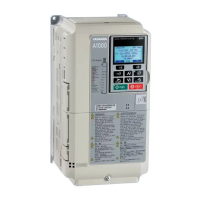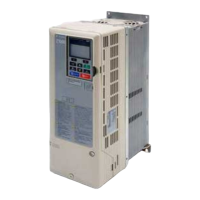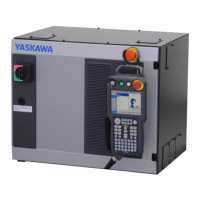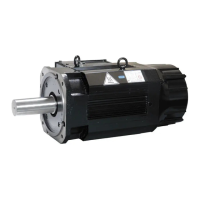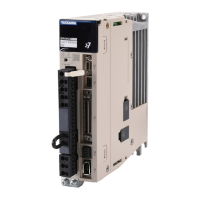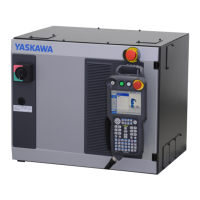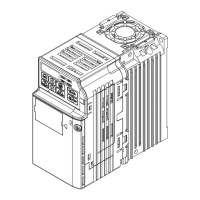8.5 Installing Peripheral Devices
This section describes the proper steps and precautions to take when installing or connecting various peripheral devices
to the drive.
NOTICE: Use a class 2 power supply (UL standard) when connecting to the control terminals. Improper application of peripheral
devices could result in drive performance degradation due to improper power supply.
◆ Dynamic Braking Options
Dynamic braking (DB) helps bring the motor to a smooth and rapid stop when working with high inertia loads. As the
drive lowers the frequency of a motor moving a high inertia load, regeneration occurs. This can cause an overvoltage
situation when the regenerative energy flows back into the DC bus capacitors. A braking resistor prevents these
overvoltage faults.
NOTICE: Do not allow unqualified personnel to use the product. Failure to comply could result in damage to the drive or braking
circuit. Carefully review the braking resistor instruction manual when connecting a braking resistor option to the drive.
Note: 1. The braking circuit must be sized properly in order to dissipate the power required to decelerate the load in the desired time. Ensure
that the braking circuit can dissipate the energy for the set deceleration time prior to running the drive.
2. Disable the drive's internal braking transistor protection by setting L8-55 = 0 when using braking resistor options.
WARNING! Fire Hazard. The braking resistor connection terminals are B1 and B2. Do not connect a braking resistor directly to any
other terminals. Improper wiring connections could result in death or serious injury by fire. Failure to comply may result in damage to
the braking circuit or drive.
NOTICE: Connect braking resistors to the drive as shown in the I/O wiring examples. Improperly wiring braking circuits could result in
damage to the drive or equipment.
■ Installing a Braking Resistor: ERF type
An ERF type braking resistors provides dynamic braking capability with up to 3% ED. It can be directly connected to the
drives B1 and B2 terminals like shown in Figure 8.5.
Enable the drive’s braking resistor overload protection by setting L8-01 = 1 when using ERF type resistors.
Figure 8.5
Figure 8.5 Connecting a Braking Resistor: ERF Type
■ Installing a Braking Resistor Unit: LKEB type
LKEB type braking resistors provide dynamic braking capability with up to 10% ED. They can be directly connected to
the drives B1 and B2 terminals as shown in Figure 8.6. The LKEB unit has a thermal overload contact that should be
utilized in order to switch off the drive in case braking resistor overheat occurs.
As the drives internal braking resistor overload protection cannot protect LKEB resistors, disable this function by setting
L8-01 to 0 and L8-55 to 0.
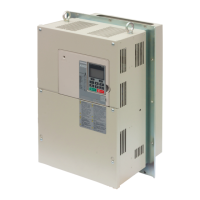
